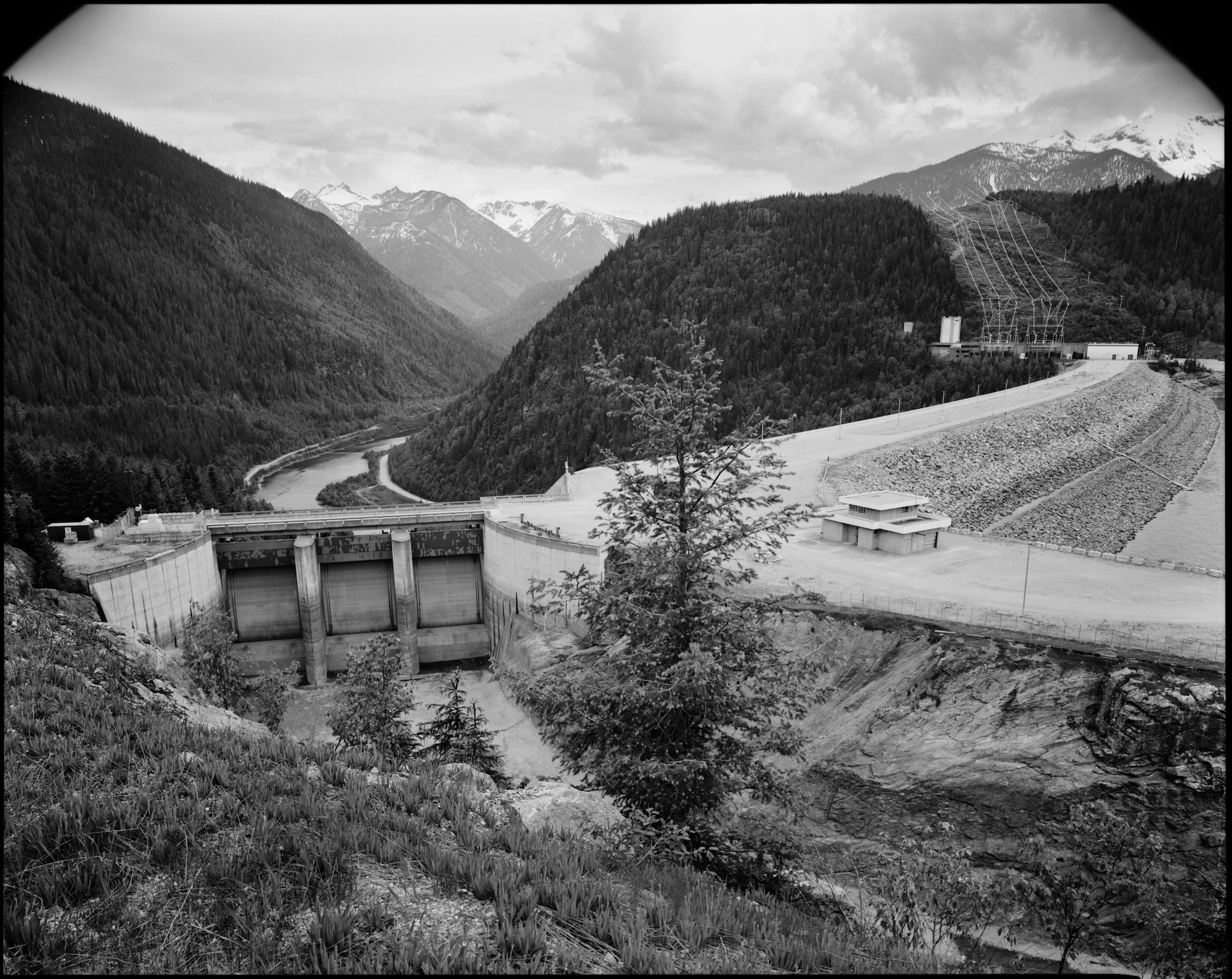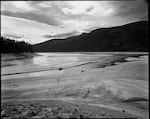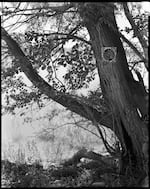
Mica Dam, Columbia River, British Columbia. Mica Dam, is the first, or uppermost dam of 14 on the main stem of the Columbia. Completed in 1973 it stands 801 feet above the bedrock. Ancestral homeland of the Secwepemc, Ktunaxa, Syilx tmix, and Sinixt People. Copyright Robbie McClaran, from "The Great River of the West."
Robbie McClaran
While living in Hood River, photographer Robbie McClaran thought of the Columbia Gorge as a playground of sorts. McClaran had a curiosity for the region and wanted to learn more about the Columbia River.
“I came across a book called ‘Voyage of a Summer Sun’ that was written by Robin Cody, and it chronicled his epic canoe trip from the entire length of the Columbia,” he said. “It really captured my imagination.”

ATV Tracks, Low Water, Kinbasket Lake, BC. Copyright Robbie McClaran, from "The Great River of the West"
Robbie McClaran
The book, along with other stories of the river and an exhibit featuring historic photographs of the Columbia Gorge, sparked his interest in documenting the river through analog, not digital, photography.
To capture a sense of the river’s history, he shot the images featured in “The Great River of the West,” on film using antique, large format cameras.
“It reminds you of photographs that were made at the time. I guess the camera was made around the turn of the century,” McClaran said. “And so I wanted these photographs to have that weight of a historic document.”
He says using the camera and film forced him to be extra disciplined. The film can be expensive, more than $5 a sheet, and his equipment weighs about 40 pounds.
“I worked very instinctively,” he said. “As long as I’ve been working in this field, more than four decades now, that’s always been my primary goal. I go with my gut.”
He says it’s important to note that the history of the Columbia River did not start with Lewis and Clark, acknowledging the history of Indigenous people throughout his work.
He also encountered regions that he called “haunting” during his journey along the roughly 1,250 miles of the river.

Target on Mulberry Tree, Hanford Reach, Washington. In 1990 two scientists sent jars of Mulberry Jam made from berries collected along the Hanford Reach to U.S. Secretary of Energy James Watkins and Washington Gov. Booth Gardner. The jars of jam, believed to be contaminated with radioactive Strontium 90, a byproduct of nuclear weapons production, was marked "Radioactive - Do Not Eat." The jars were accompanied by a note from the senders, Norm Buske and his wife, Linda Josephson, which read "This mulberry jam is a token of the future hazard of unidentified, uncontained and unmanaged radioactivity at Hanford.’’ Copyright Robbie McClaran, from "The Great River of the West"
Robbie McClaran
One of the places he stopped was near the Hanford Site, a decommissioned complex in southeastern Washington that produced plutonium during World War II as part of the Manhattan Project.
“On one hand, the landscape on the east side of the river is a National Wildlife Refuge,” he said. “And yet, periodically, you’ll come across a sign that will say something along the lines of ‘if you hear a loud siren blast three times consecutively, get the hell out of Dodge.’”
McClaran’s work is on display in Astoria at the LightBox Photographic Gallery through May 11.
Listen to the entire conversation:

